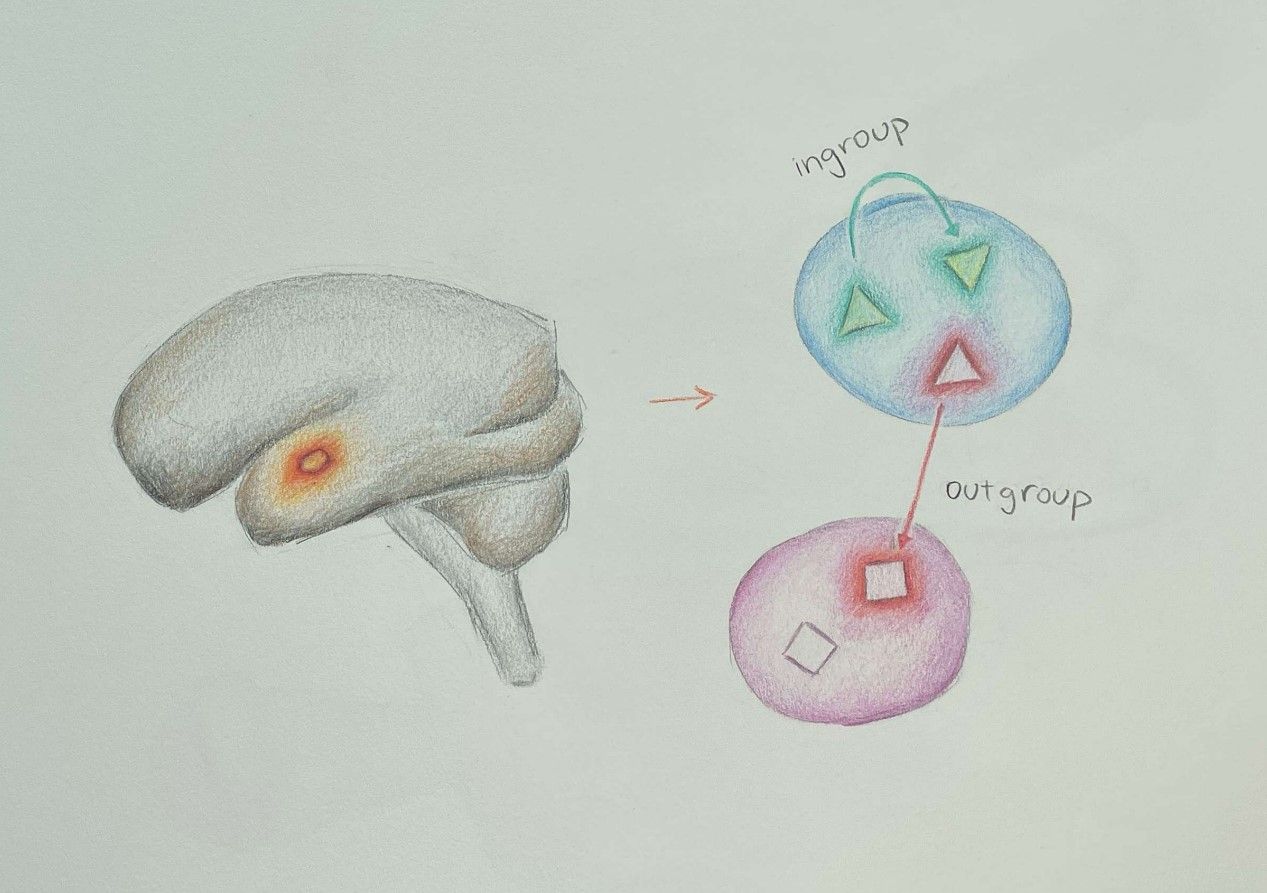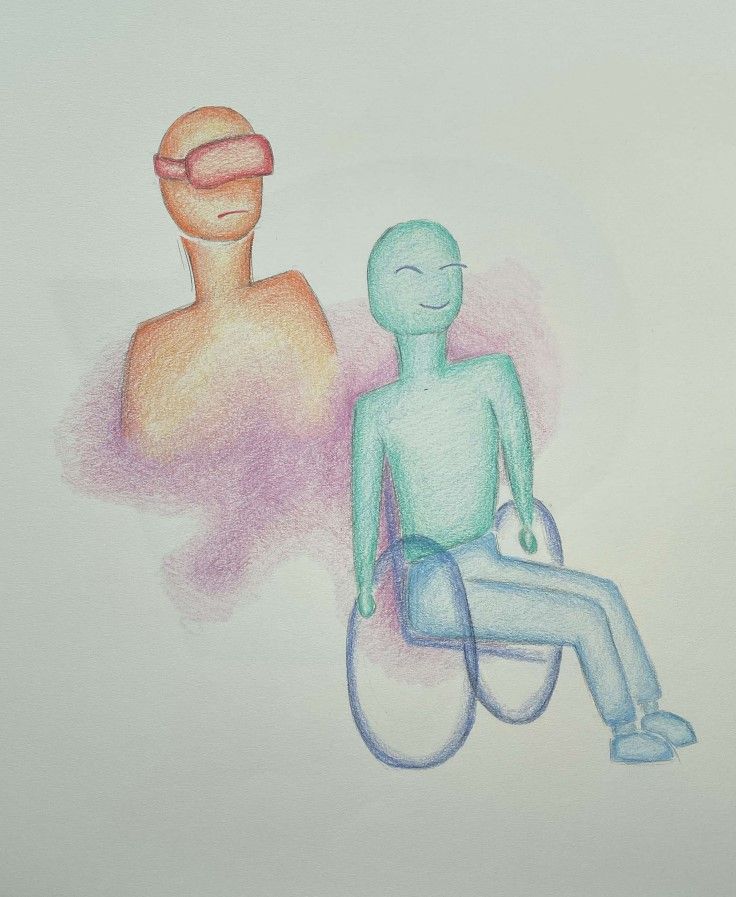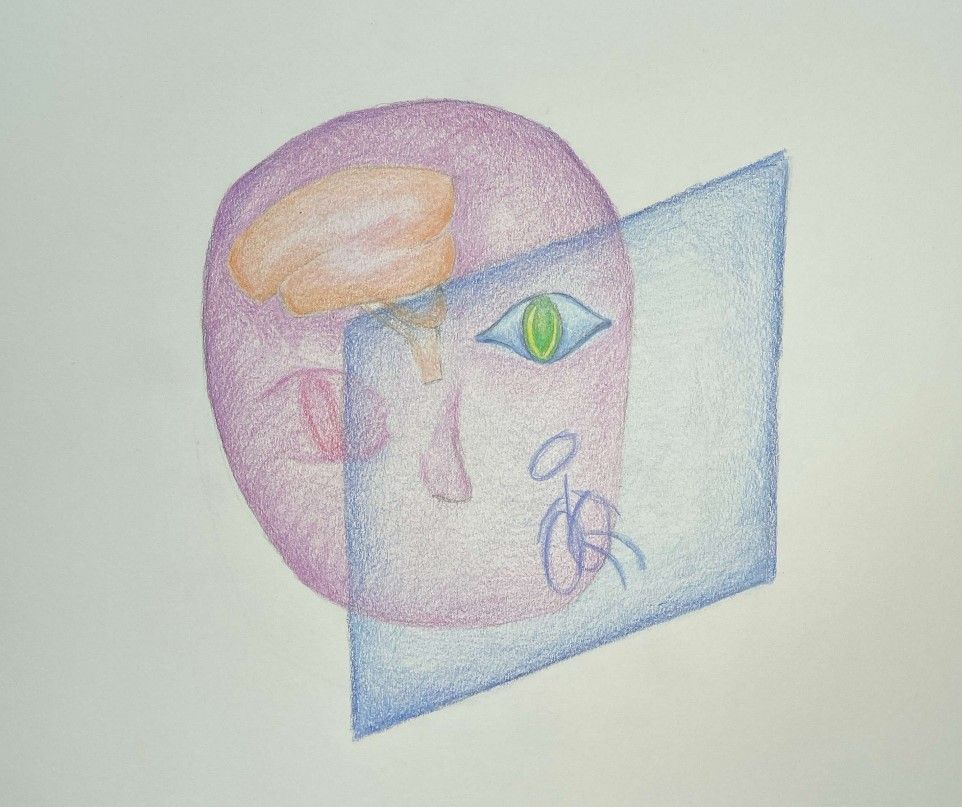Introduction
Living with a physical disability can be incredibly challenging — having to alter common tools to make them usable, wondering if the places that you plan to visit have accessible entryways, and being unable to take part in certain activities with your loved ones [1]. As if this lack of accomodation isn’t enough of a struggle, people with disabilities frequently face discrimination in the form of prejudice and stereotyping. Because it can be easier to observe when people have a visible disability- such as walking with a cane, having muscular development issues, or other easily observed conditions- judgments are often made quickly about those with physical impairments. These biases severely impact their social, emotional, and mental health.
Trying to stay calm in a stressful situation or having to face aggressive policemen? For a disabled person, these situations can lead to injury or even death because others unjustly perceive people with disabilities to be dangerous [2]. Working hard at your job and trying to convince a boss to give you more responsibility? When employers see someone with a disability, they tend to assume that they are incapable of accomplishing simple tasks, resulting in lower employment rates relative to people without disabilities [3][4]. Excited about your first child and feeling confident in your abilities as a parent? You may have to prepare for an unexpected CPS visit, since people with disabilities face higher rates of being reported to child welfare services or losing their parental rights [5]. Dealing with this discrimination in all facets of life takes a heavy toll on one’s wellbeing, and it doesn’t just begin at adulthood. Children with disabilities are more likely to experience physical and verbal bullying, and the community as a whole experiences higher rates of suicide than those without disabilties [6][7]. By dissecting the neural foundations of ableist prejudice and stereotyping, we can find a way to deconstruct these biases towards disabled people and create a more accommodating and accessible environment for all.
It can be difficult to discern the difference between prejudice and stereotyping, and the two words are sometimes used interchangeably. However, there are several factors that separate the terms. Prejudice is an unfounded feeling or attitude towards a group or individual that stems from one's emotions, whereas stereotypes are more thought-based and are uninformed generalizations about people. For example, prejudice would be feeling threatened for no logical reason when encountering a cat on the road, and a stereotype would be thinking that cats are inherently evil with no justification. These distinctions are significant because prejudice and stereotyping call on different neural functions. Therefore, they originate and form in specific areas of the brain apart from each other [8].
Prejudice
Research on prejudice is focused on the emotional and social control centers of the brain, like the amygdala, insula, and parts of the frontal cortex. The amygdala is located in the middle of the temporal lobes of the brain, and, in relation to prejudice, it is thought to play a role in ingroup and outgroup differences [9][10]. These differences describe how people perceive their own ingroup - or group that they are a part of - and their impressions of outgroups - or groups that they cannot identify with. Often in research on racial prejudice, individuals from an “ingroup”, sharing the same race, are shown faces both from their race and from an “outgroup”, or a race that is not their own (and often one that they feel threatened by).

While many of these ingroup vs. outgroup studies deal with race, these findings are often consistent with other forms of prejudice, suggesting that the amygdala could be a potential basis for prejudice in general instead of being involved with race specifically [11]. As a result, studies conducted on racial prejudice could be used to learn things about prejudice in general. One influential study conducted by University of York researchers conducted by University of York researchers aimed to test prejudice towards an outgroup, South Korea, by using 70 Japanese students [12]. Each of these students saw three series of images while inside an fMRI. In each series, they were shown images labeled either “Japan” or “South Korea” that were slightly shifted to one side of the screen and would then be asked to press the key corresponding to the side of the screen that the image was on. Because the students had to analyze the pictures for long enough to discern which side they were on, the researchers were able to observe the participants making judgements based on prejudice. This would then show neural activity in whichever area of the brain was responsible for those feelings. The results from the fMRI brain scan revealed consistent neural activity in the left side of the amygdala, but not the right, suggesting that the two sides handle different functions, and activity in the left amygdala is correlated with prejudiced behavior.
While this study and many others like it helped draw a connection between activity in the amygdala and the prejudice against an outgroup, one review study tracked the history of the relationship between the amygdala and prejudice and posited a new way to structure these types of experiments [9]. Scientists at the University of Oxford noticed one study showed that the amygdalas of African American participants were not only responsive when viewing a member of the European American outgroup, but also when viewing another African American. These results suggest that the amygdala is not active solely when an outgroup member was shown, contrary to the Japan-South Korea experiment. The scientists who noticed this proposed that the perception of an African American in certain countries is someone who tends to be more aggressive and violent. Although this is untrue, it has contributed to widespread prejudice that could activate the fear response in the amygdala. The researchers believe that in order to more accurately frame the role of the amygdala in prejudice, experiments should be focusing on the perception of threat amongst the participants, rather than assuming that only outgroups activate the amygdala. They go on to say that the reason for the amygdala activation in response to outgroups is that individuals inherently consider members of the outgroup a threat, eliciting hostile and on-edge behavior. To support this claim, the scientists cite a 2007 study by University of Southern California researchers in which individuals with damage to the amygdala tend to avoid direct eye contact, suggesting that they are less able to respond to a threat or a marker of aggression. This idea could weave into other concepts gained from experiments, such as how the amygdala plays a role in fear conditioning, and why assessing the trustworthiness of an entity activates the amygdala [13][14][15].
Stereotyping
While prejudice relies on instinctive emotional feelings, stereotyping involves the encoding of an assumed thought into memory and applying it to certain behaviors or judgements. As a result, stereotyping relies heavily on the temporal lobes, an area of the brain that handles object retrieval- being able to recognize and remember objects- and semantic memory- general and concept-based knowledge. Stereotypes can present themselves in two ways- explicit or implicit. Explicit stereotypes are biased observations that one is consciously aware of- for example, thinking that all cats are evil. Implicit stereotyping, on the other hand, are generalizations that one may not even know that they have- for example, you may say out loud that all cats are nice, but subconsciously uneasy around cats or think that they are malevolent.
An experiment directed by researchers from University College London and New York University aimed to map out what part of the brain was active when people formed stereotypes [16]. To accomplish this, they recruited 20 participants who were shown different combinations of a pair of faces, with each face either being European American, Asian, or African American. They were asked to look at the two faces in each set and determine ‘‘Who is more likely to enjoy athletic activities?’’ and ‘‘Who would you be more likely to befriend?’’. The goal of these questions were to prompt the participant to make both a prejudicial and stereotypical judgment. Deciding on whether or not to start a friendship with an individual is an instinctive emotional feeling that relates to prejudice, whereas having a set assumption about a type of person - whether or not they would be athletic - would relate to stereotypes. While they underwent this task, the participants’ neural activity was scanned via fMRI. The results revealed activity in the occipital lobe and superior parietal lobe, which are responsible for visual processing and visual perception respectively. In addition, the results also revealed activity in the frontal lobe, which is responsible for judgements and higher order thinking, and in the temporal lobe. Specifically, they found that the anterior temporal lobe influenced implicit stereotyping.
Physical Disability
Stereotyping and prejudice harms anyone on the receiving end, and for people with certain attributes - like the existence of a physical disability - it is harder to hide from negative biases. Each individual who is mistreated for their traits faces their own challenges, and for physically disabled people, the fact that their disability is more easily observable can cause adverse reactions from others.
One study from the University of Pennsylvania analyzed the neural responses of participants to individuals who were disfigured or varied from the “norm”, as is often the case with physical disabilities [17]. The researchers used fMRI data to observe neural activity of participants in response to images of disfigurement. The researchers also conducted a behavioral analysis to determine whether or not the participants had a bias against people with unusual characteristics. They found that the brain scans revealed increased activity in the occipi-temporal cortex (the area of the brain involving visual processing) and decreased activity in the medial anterior cingulate gyrus and medial prefrontal cortex (areas involved in emotion, behavior, and empathy). The researchers hypothesized that this change in activity was because participants had to focus more on inhibiting inappropriate social behavior or suppressing empathy when viewing those with facial disfigurements. The results of a written behavioral survey given to the participants revealed no sign of preference or explicit bias. This could mean that people neurologically hold a negative bias towards those with disfigurements or disabilities even if they are unaware of it.
How can we help?
Even though individuals may not be explicitly aware of their own biases, there are actions that can be taken to work against the stereotyping and prejudice that people with disabilities constantly face. One way to tackle these preconceived notions is to put oneself in the shoes of a disabled person - literally. Researchers from Marshall University and the College of New Jersey attempted to decrease the implicit bias of participants by using a virtual reality (VR) simulation to put participants into the perspective of someone with a physical disability [18]. The participants were divided into two main groups. One group underwent an immersive VR experience, and the other group simply watched the events unfold on a desktop monitor. Participants sat in a wheelchair in real life and virtually navigated through a model of a large AT&T center, all while reading about multiple sclerosis (MS) on nearby information boards. Before and after the virtual journey, all of the participants took an Implicit Associations Test (IAT) to assess any potential biases they had towards people with disabilities. In the IAT test, the participants had to sort pictures of people with or without physical disabilities and had to sort words that were either positive or negative into the specific categories as quickly as they could. For example, one category could read, “good words and people with disabilities,” and the participants would have to accurately place the images of people with disabilities and words like “attractive” or “friend” into that category. Any implicit bias could be revealed by the speed and accuracy at which the participants were able to fill each category. After comparing the IAT results before and after the experiment, the researchers found that both virtual experience methods helped to decrease negative bias towards people with disabilities, and the VR simulation was significantly more successful in that goal than the desktop trial. This study opens up a potential avenue through which accessibility can be increased. For example, pending follow-up research that confirms these findings, VR simulations in which people are able to step into the shoes of someone who is physically disabled will become more accessible. This technology can be used to increase empathy and accommodations for different fields- like occupational or parental- so that there is less discrimination and more understanding for those who have disabilities. VR can also help people understand that being disabled does not prevent you from being a successful and functioning person. Hopefully with the increasing use of VR simulations and other forms of widening one’s perspective, the stigma against people with disabilities will decrease.

References
- Centers for Disease Control and Prevention. (2020, September 16). Disability and health disability barriers. Centers for Disease Control and Prevention. Retrieved March 13, 2022, from https://www.cdc.gov/ncbddd/disabilityandhealth/disability-barriers.html
- R;, S. S. E. G. (n.d.). Ending disparities and achieving justice for individuals with mental disabilities. Albany law review. Retrieved March 13, 2022, from https://pubmed.ncbi.nlm.nih.gov/30990588/
- C;, F. (n.d.). The relationship between disability prejudice and disability employment rates. Work (Reading, Mass.). Retrieved March 13, 2022, from https://pubmed.ncbi.nlm.nih.gov/32116277/
- JR;, C. E. H. D. S. (n.d.). The stereotype content model and disabilities. The Journal of social psychology. Retrieved March 13, 2022, from https://pubmed.ncbi.nlm.nih.gov/35037596/
- Rothler, R. (2017). Disability rights, reproductive technology, and parenthood: unrealised opportunities. Reproductive Health Matters, 25(50), 104–113. http://www.jstor.org/stable/26495936
- M;, P. (n.d.). Systematic review: Bullying involvement of children with and without chronic physical illness and/or physical/sensory disability-A meta-analytic comparison with healthy/nondisabled peers. Journal of pediatric psychology. Retrieved March 13, 2022, from https://pubmed.ncbi.nlm.nih.gov/27784727/
- MD;, K. L. R. A. (n.d.). Do physical disabilities differentiate between suicidal ideation and attempts? an examination within the lens of the ideation to action framework of Suicide. Journal of clinical psychology. Retrieved March 13, 2022, from https://pubmed.ncbi.nlm.nih.gov/30597536/
- Amodio, D. M. (2014, September 4). The neuroscience of prejudice and stereotyping. Nature News. Retrieved March 13, 2022, from https://www.nature.com/articles/nrn3800#Sec4
- Chekroud, A. M., Everett, J. A. C., Bridge, H., & Hewstone, M. (2014, March 27). A review of neuroimaging studies of race-related prejudice: Does amygdala response reflect threat? Frontiers in human neuroscience. Retrieved March 13, 2022, from https://www.ncbi.nlm.nih.gov/pmc/articles/PMC3973920/#B34
- Wheeler, M. E., & Fiske, S. T. (2005, January). Controlling racial prejudice: Social-cognitive goals affect amygdala and stereotype activation. Psychological science. Retrieved March 13, 2022, from https://www.ncbi.nlm.nih.gov/pubmed/15660852/
- J;, K. K. M. M. L. M. C. F. G. (n.d.). Neural correlates of automatic beliefs about gender and race. Human brain mapping. Retrieved March 13, 2022, from https://pubmed.ncbi.nlm.nih.gov/17133388/
- Neural signals in amygdala predict implicit prejudice ... (n.d.). Retrieved March 14, 2022, from https://eprints.soton.ac.uk/427399/1/181211Ethnic_Prejudice_final_version.pdf
- Krabbe, S., Grundemann, J., & Luihi, A. (2017). Amygdala Inhibitory Circuits Regulate Associative Fear Conditioning. Biological Psychiatry. Retrieved March 13, 2022, from https://www.biologicalpsychiatryjournal.com/article/S0006-3223(17)32062-0/fulltext#secsectitle0045
- P;, S. Y. G. H. S. (n.d.). Fear conditioning and the basolateral amygdala. F1000Research. Retrieved March 13, 2022, from https://pubmed.ncbi.nlm.nih.gov/32047613/
- Santos, S., Almeida, I., Oliveiros, B., & Castelo-Branco, M. (2016, November 29). The role of the amygdala in facial trustworthiness processing: A systematic review and meta-analyses of fmri studies. PloS one. Retrieved March 13, 2022, from https://www.ncbi.nlm.nih.gov/pmc/articles/PMC5127572/
- Evaluative vs. trait representation in intergroup social ... (n.d.). Retrieved March 14, 2022, from https://jswenc.files.wordpress.com/2017/09/gilbert-swencionis-amodio-2012.pdf
- Hartung, F., Jamrozik, A., Rosen, M. E., Aguirre, G., Sarwer, D. B., & Chatterjee, A. (2019, May 29). Behavioural and neural responses to facial disfigurement. Scientific reports. Retrieved March 13, 2022, from https://www.ncbi.nlm.nih.gov/pmc/articles/PMC6541618/ VR disability simulation reduces implicit bias towards ... (n.d.). Retrieved March 14, 2022, from https://www.researchgate.net/publication/337875864_VR_Disability_Simulation_Reduces_Implicit_Bias_Towards_Persons_With_Disabilities
